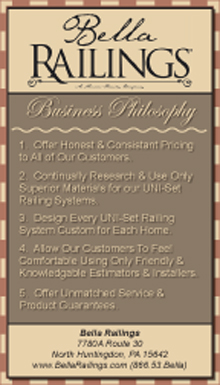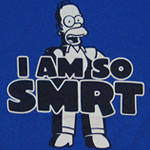 In 20 minutes, you have the biggest sales call of your life.
In 20 minutes, you have the biggest sales call of your life.
It could mean your next promotion.
It could mean millions of dollars in revenue.
It could mean a new business relationship that lasts a lifetime.
Are you wearing The Armor of Google?
Huh? The Armor of what?!
You heard me: Google. The greatest thing to happen to the Internet since the Internet. And, your best friend in approaching the sale.
See, approachability stems from confidence. Confidence grows from knowledge. And knowledge is enhanced through preparation. So, what better way to prepare yourself for your upcoming sales call than to spend the next 20 minutes Googling your brains out?
Here are 6 ways turn Google into your secret weapon when approaching the sale.
SECRET WEAPON #1: Google Yourself
If you’re not doing this at least a few times a month anyway, you’re crazy. And this isn’t an ego thing, it’s about visibility. It’s about reputation. You need to know who’s talking about you, where you show up & where you don’t show up.
REMEMBER: every time you encounter a potential client – in person, on the phone, via email – odds are, they’ve already Googled you.
ALSO REMEMBER: if you don’t exist on Google, you don’t exist.
SECRET WEAPON #2: Google Your Company
Find out what customers, clients and the competition are saying about your company. If possible, get involved in chat rooms, bulletin boards and other online networking venues to represent (or defend) your organization.
KEEP IN THE FRONT OF YOUR MIND: you can participate in your online image, but you can’t control it.
KEEP IN THE BACK OF YOUR MIND: you and your company are getting talked about, whether you like it or not.
SECRET WEAPON #3: Google Their Company
Sure, you can go to the website of a potential client you hope to work with, but Googling their company name will give you a much broader scope. Find out what other people are saying about them. Especially if it’s negative feedback. See if they’ve been in the news lately, either for something good OR bad.
THINK ABOUT IT: a company’s own website won’t post anything bad about themselves.
AND THINK ABOUT THIS: you might say something stupid or accidentally hit a hot button if you don’t do your research first.
SECRET WEAPON #4: Google Your Prospects
I recently did a conference call with the VP of Marketing from a Fortune 500 company. He was interested in working together, so prior to our meeting, I spent a few minutes Googling his name. I found a great article all about his leadership style; printed it out, stuck it on my wall, then quoted the VP’s own words back to him at the end of our conversation. I complimented his eloquence and then explained how my services connected with his philosophy. He loved it!
YOUR GOAL: preparation, preparation, preparation.
ALSO YOUR GOAL: make that prospect think, “Wow, he did his homework!”
SECRET WEAPON #5: Google Alerts
Every time I speak to a group of people, I always ask them, “How many of you are using Google Alerts?” Usually 3 hands out of 500 go up. And I’m always amazed, mainly because Google Alerts are GOLD. They are email updates of the latest relevant Google results (web, news, etc.) based on your choice of query or topic. My suggest to you is, get alerts for your specific areas of expertise. Help enhance your ongoing education. For example, I have alerts on “nametags” and “approachability.” Other items you might want to consider getting alerts for: your name, your company’s name, your product’s name, your website’s name, clients’ names, your competition’s name, etc.
YOU’LL BE AMAZED: about where your name shows up on the Internet.
YOU’LL ALSO BE AMAZED: at what you can learn that you otherwise never would have discovered.
SECRET WEAPON #6: Googling Personal Info
This one is just fun. Try your own phone number, address, or better yet, your email. Try your boss’s or your spouse’s information. It’s wicked cool. Also, Google your OLD personal information, especially out-of-date phone numbers. You can see which websites list you incorrectly. (If you’re really anal, you can call them up and tell them to change it.) That one will blow your mind.
(NOTE: I just Googled my social security number. Nothing came up, thank God.)
TRUST ME: your personal information is out there somewhere.
AND TRUST THIS: the Internet is forever. (Insert spooky sound effect sound.)
Now, one bit of caution: be careful how you reveal this information to your prospect. If you shake someone’s hand, look him in the eye and say, “So I was Googling you yesterday…” that might give the impression that you were stalking him.
I suggest you wait until the moment is right, and casually say “I asked around,” “I was surfing the web” or “I stumbed upon…” Those phrases are a lot less threatening.
Ultimately, when you’re faced with an important sales call, Google is a brilliant preparation tool. It equips you with the information, and therefore, the confidence; to approach that sale like a pro.
Google on!
LET ME ASK YA THIS…
How are you using Google to prepare yourself to approach the sale?
LET ME SUGGEST THIS…
Get your people, team, department (whatever) together for “Google Time.” Have each person spend 20 minutes Googling, then have a meeting where you discuss your findings.
* * * *
Scott Ginsberg
Author/Speaker/That Guy with the Nametag
www.hellomynameisscott.com
add to del.icio.us * digg it! * email this post
 People want to do business with (and be around) other people who have their own philosophy.
People want to do business with (and be around) other people who have their own philosophy.
 The other day I (thought) I was having an epiphany:
The other day I (thought) I was having an epiphany:  “I’d gladly pay you Tuesday for a hamburger today.”
“I’d gladly pay you Tuesday for a hamburger today.” Think of the most horrible sound imaginable.
Think of the most horrible sound imaginable. ANOTHER EXAMPLE: I took a flight on US Airways from Phoenix to St. Louis a few weeks back. When my delicious, hearty meal was delivered to my seat (by which I mean a cookie), I opened the tray table only to find the entire surface was covered with a colorful advertisement!
ANOTHER EXAMPLE: I took a flight on US Airways from Phoenix to St. Louis a few weeks back. When my delicious, hearty meal was delivered to my seat (by which I mean a cookie), I opened the tray table only to find the entire surface was covered with a colorful advertisement! I’ve never been much for textbook sales methods: 17 kinds of closes, 24 ways to overcome objections, you know, all that stuff.
I’ve never been much for textbook sales methods: 17 kinds of closes, 24 ways to overcome objections, you know, all that stuff. Last week I briefly talked about
Last week I briefly talked about  Potential customers, fans, friends, family members, audience members, readers of your material, website visitors, and pretty much anyone else that comes into contact with your business needs to know three things.
Potential customers, fans, friends, family members, audience members, readers of your material, website visitors, and pretty much anyone else that comes into contact with your business needs to know three things.  In 20 minutes, you have the biggest sales call of your life.
In 20 minutes, you have the biggest sales call of your life.  Radio ads. Billboards. Wall Posters. Yellow pages. Pamphlets. Leaflets. Brochures. TV commercials. Newspapers ads. Magazine ads. Pop ups. Fax Outs. Hiring a fat guy to stand out on the street corner during traffic with a big sandwich board three blocks down the street from your restaurant. Pitching the media to do stories about you. Standing at a big flashy booth at a trade show giving away free pens. Blinking web ads. Direct Email.
Radio ads. Billboards. Wall Posters. Yellow pages. Pamphlets. Leaflets. Brochures. TV commercials. Newspapers ads. Magazine ads. Pop ups. Fax Outs. Hiring a fat guy to stand out on the street corner during traffic with a big sandwich board three blocks down the street from your restaurant. Pitching the media to do stories about you. Standing at a big flashy booth at a trade show giving away free pens. Blinking web ads. Direct Email.  1. I need your help. When approaching a service agent or receptionist, this opening line appeal to someone’s instinctive helpful nature. You’re likely to get a better response (and better service!) if you use this line.
1. I need your help. When approaching a service agent or receptionist, this opening line appeal to someone’s instinctive helpful nature. You’re likely to get a better response (and better service!) if you use this line.